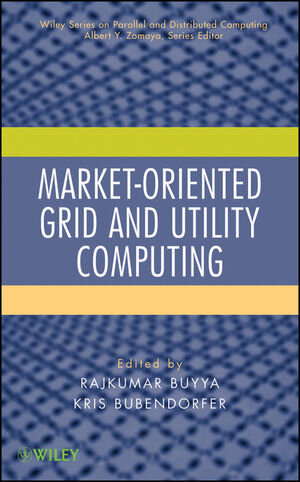
×
![Buchcover ISBN 9780470455425]()
The first single-source reference covering the state of the artin grid and utility computing economy research
This book presents the first integrated, single-source referenceon market-oriented grid and utility computing. Divided into fourmain parts--and with contributions from a panel of experts inthe field--it systematically and carefully explores:
* Foundations--presents the fundamental concepts ofmarket-oriented computing and the issues and challenges inallocating resources in a decentralized computing environment.
* Business models--covers business models for serviceproviders and brokers supporting different types of distributedapplications, as well as business rules-based models for managingvirtual organizations and accounting operations and services ingrid computing environments.
* Policies and agreements--introduces policies, agreements, and specifications for the negotiation andestablishment of contracts between providers and consumers. It alsocovers different approaches for resource allocation based onservice-level agreements (SLAs) and management of risks associatedwith SLA violations.
* Resource allocation and schedulingmechanisms--covers economic models, such as commoditymodels, reciprocation, auctions, and game theory, and middlewaretechnologies, such as Nimrod/G and Gridbus, for market-orientedgrid computing and utility-oriented resource allocation.
This book expertly captures the state of the art in the fieldwhile also identifying potential research directions andtechnologies that will facilitate the creation of global commercialgrid and utility computing systems. It is an indispensablereference for systems architects, practitioners, developers, newresearchers, and graduate students.
This book presents the first integrated, single-source referenceon market-oriented grid and utility computing. Divided into fourmain parts--and with contributions from a panel of experts inthe field--it systematically and carefully explores:
* Foundations--presents the fundamental concepts ofmarket-oriented computing and the issues and challenges inallocating resources in a decentralized computing environment.
* Business models--covers business models for serviceproviders and brokers supporting different types of distributedapplications, as well as business rules-based models for managingvirtual organizations and accounting operations and services ingrid computing environments.
* Policies and agreements--introduces policies, agreements, and specifications for the negotiation andestablishment of contracts between providers and consumers. It alsocovers different approaches for resource allocation based onservice-level agreements (SLAs) and management of risks associatedwith SLA violations.
* Resource allocation and schedulingmechanisms--covers economic models, such as commoditymodels, reciprocation, auctions, and game theory, and middlewaretechnologies, such as Nimrod/G and Gridbus, for market-orientedgrid computing and utility-oriented resource allocation.
This book expertly captures the state of the art in the fieldwhile also identifying potential research directions andtechnologies that will facilitate the creation of global commercialgrid and utility computing systems. It is an indispensablereference for systems architects, practitioners, developers, newresearchers, and graduate students.



